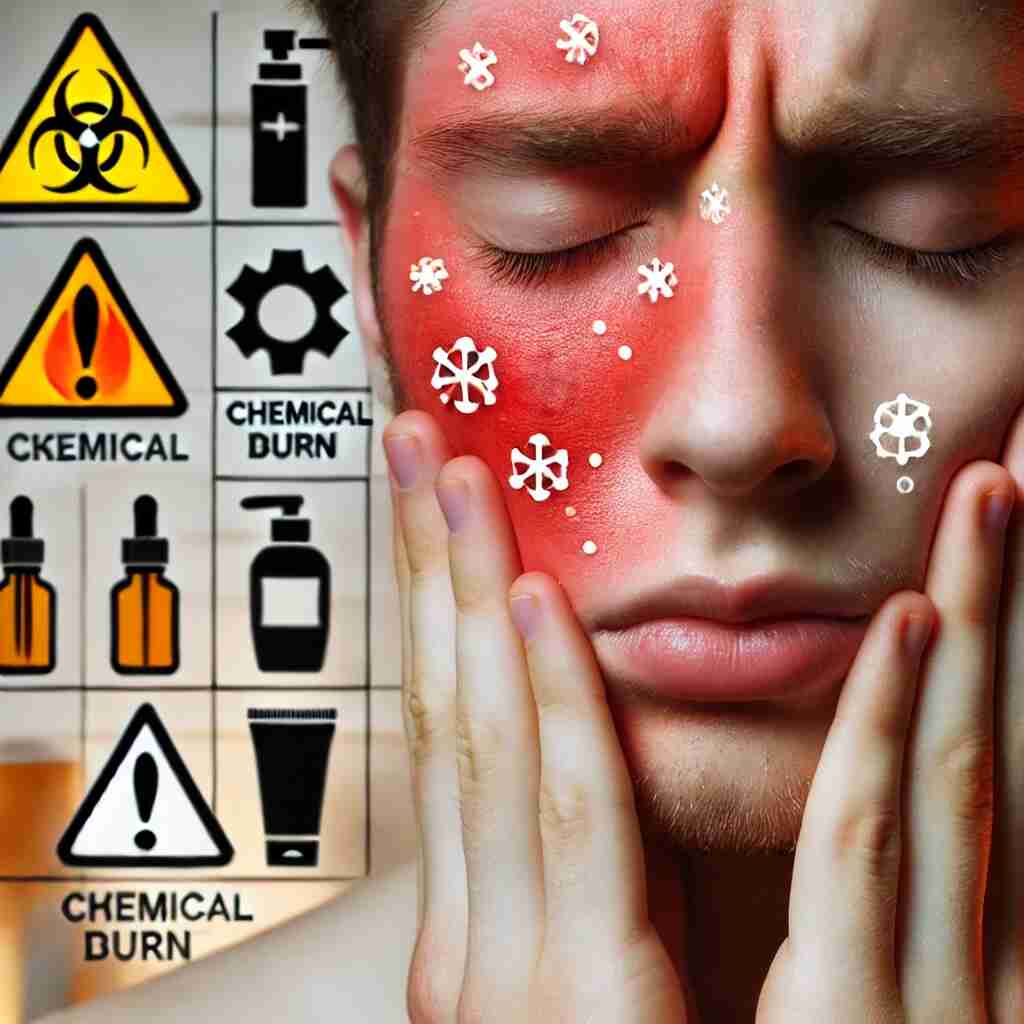Chemical burns are no joke, especially when they affect sensitive areas like the face. The term “Beasteater face chemical burn” has been making rounds online, and for good reason. Whether it’s due to a skincare product gone wrong or an accidental exposure to harsh chemicals, facial chemical burns can be both painful and traumatic. In this article, we’ll dive deep into what causes these burns, how to treat them, and share a real-life experience to help you understand the severity of the issue. Plus, we’ll explore research studies and answer some frequently asked questions. Let’s get started!
What is a Beasteater Face Chemical Burn?
A Beasteater face chemical burn refers to a severe chemical burn on the face, often caused by exposure to corrosive substances. The term “Beasteater” has gained traction online, possibly due to its association with intense or extreme outcomes. Chemical burns on the face can result from improper use of skincare products, accidental spills, or even workplace accidents. These burns can range from mild irritation to severe tissue damage, depending on the chemical involved and the duration of exposure.
Causes of Beasteater Face Chemical Burns
- Skincare Products Gone Wrong
Many chemical burns occur due to the misuse of skincare products containing acids, retinoids, or other potent ingredients. Overuse or failure to follow instructions can lead to burns. - Household Cleaners
Accidental splashes of bleach, drain cleaners, or other harsh chemicals can cause severe burns if they come into contact with the face. - Industrial Accidents
People working in industries that handle corrosive substances are at a higher risk of chemical burns. - DIY Beauty Treatments
Homemade remedies or unregulated beauty treatments can sometimes contain harmful chemicals that damage the skin.
Real-Life Experience: A Survivor’s Story
Meet Sarah, a 28-year-old skincare enthusiast who experienced a Beasteater face chemical burn firsthand. Sarah decided to try a DIY chemical peel she found online, hoping to achieve glowing skin. Unfortunately, the mixture was too strong, and within minutes of application, she felt a burning sensation. Despite washing it off immediately, her face turned red, swollen, and blistered.
Sarah’s recovery took weeks. She had to visit a dermatologist, apply prescribed ointments, and avoid sunlight. Her story is a stark reminder of the dangers of unregulated beauty treatments and the importance of following professional advice.
Treatment for Beasteater Face Chemical Burns
If you or someone you know experiences a chemical burn on the face, here’s what to do:
- Immediate First Aid
- Rinse the affected area with cool water for at least 20 minutes.
- Remove any contaminated clothing or jewelry.
- Avoid rubbing the area, as this can worsen the damage.
- Seek Medical Attention
For severe burns, visit a healthcare professional immediately. They may prescribe antibiotics, pain relievers, or specialized ointments. - Follow Aftercare Instructions
- Keep the area clean and moisturized.
- Avoid sun exposure and use sunscreen.
- Stay hydrated to promote healing.
Research Studies on Chemical Burns
Several studies have highlighted the dangers of chemical burns and their long-term effects. A 2020 study published in the Journal of Burn Care & Research found that facial chemical burns are particularly challenging to treat due to the sensitivity of the skin. The study emphasized the importance of immediate first aid and professional medical intervention to prevent scarring and infection.
Another study in the International Journal of Dermatology (2021) explored the rise of chemical burns from DIY beauty treatments. Researchers noted a significant increase in cases, especially among young adults experimenting with unregulated products.
Prevention Tips
- Always read and follow instructions on skincare products.
- Wear protective gear when handling chemicals.
- Avoid DIY treatments with unverified ingredients.
- Patch test new products before full application.
FAQs About Beasteater Face Chemical Burns
1. Can a chemical burn on the face heal completely?
Yes, with proper treatment, most chemical burns heal. However, severe burns may leave scars or require cosmetic procedures.
2. How long does it take for a facial chemical burn to heal?
Mild burns may heal in a few days, while severe burns can take weeks or even months.
3. Are there any home remedies for chemical burns?
While rinsing with water is the first step, avoid using home remedies like vinegar or baking soda, as they can worsen the burn.
4. Can I wear makeup after a chemical burn?
It’s best to avoid makeup until the skin has fully healed to prevent irritation or infection.
Conclusion
A Beasteater face chemical burn is a serious issue that requires immediate attention and proper care. Whether caused by skincare products, household chemicals, or workplace accidents, these burns can have long-lasting effects. By understanding the causes, treatments, and prevention methods, you can protect yourself and your loved ones from such incidents. Remember, when it comes to your skin, safety should always come first.
This is the official website of foreign magazine where you can get more information around the world.
Final Thoughts
Chemical burns, especially on the face, are not only physically painful but can also take an emotional toll. The key to avoiding such incidents is awareness and caution. Always prioritize safety over quick fixes, and consult professionals for skincare and chemical handling. If you ever face a chemical burn, act quickly and seek medical help to minimize damage. Stay safe, and take care of your skin—it’s the only one you’ve got!










